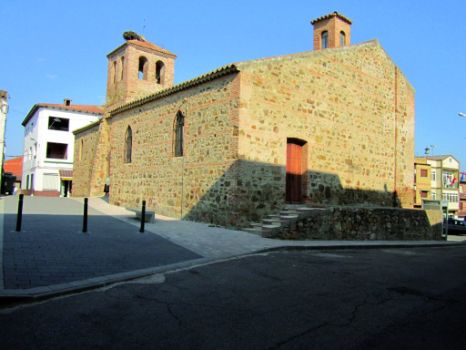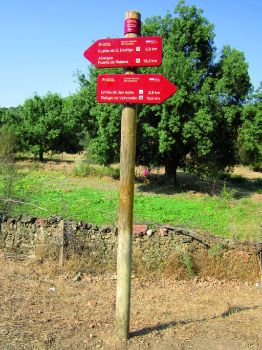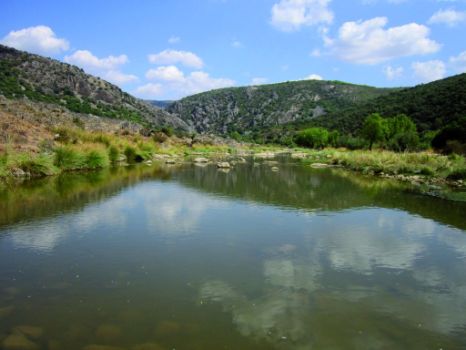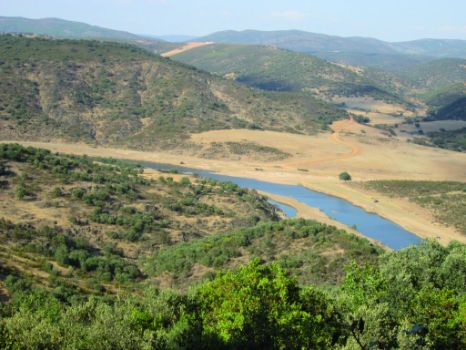Net of Natural
Trails

Stage 15: Puebla de Don Rodrigo - Refugio de Valhondillo
Description
From dehesas to the Cabañeros pine forests
This Stage escorts the River Guadiana through Bueyes Mountain Range, the first natural obstacle on its way to Extremadura. Leaving Puebla de Don Rodrigo behind, the Trail ventures into holm oak dehesas and farmland until it reaches the riverbank. From here, it heads through Las Hoces and El Murciano gorges, along the left slope of a steep valley, amidst scrubland and pine forests, to arrive at Valhondillo Forest Refuge.
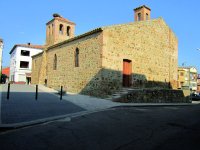
This Stage starts at the edge of Puebla de Don Rodrigo, next to a Caminos Naturales information panel, which is also the endpoint of Stage 14 Albergue Juvenil Puente de Retama - Puebla de Don Rodrigo. The Church of San Juan Bautista, a 15th-century religious building, is the town's main cultural heritage and well worth a visit.
Soon after leaving Puebla de Don Rodrigo, the Trail heads through farmlands with olive trees on both sides of the route; a landscape typical of Ciudad Real. The landscape changes almost immediately to holm oak (Quercus ilex) dehesas mixed with cropland and pastures where Merino sheep graze. This image is more typical of the province of Badajoz, which lies nearby.
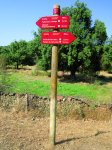
Once the Trail arrives near the river, it continues parallel to it. Initially, it heads alongside the river at the same level. However, near Tarales Ford, a backwater close to the road, the path climbs gradually up the slope of the valley, offering close up views of the river, including floating colonies of white water lilies (Nymphaea alba), which spread out over the water surface from the edge. Otters (Lutra lutra). are common in this section of the River Guadiana, and roe deer(Capreolus capreolus)graze in the surrounding holm oak forests.
Holm oaks that grow on a large natural esplanade, between the river and the Trail, provide shade. This is an ideal spot for taking a break or walking down to the river to watch its gentle flow. The mountain ranges of Loca and Enmedio, on the opposite side of the Guadiana, can be seen from here. To the northwest (left) are the mountains that separate the provinces of Ciudad Real and Badajoz, and the head of Estrecho de las Hoces. The banks of the Guadiana are scarcely populated with vegetation in this area.

Shortly after, the river forms a wide meander, bending nearly 90 degrees to face the mountains. A signposted path that leads to Estrecho de las Hoces emerges to the right of the Trail. Although, this Stage does not include this route, the path leads to the River Guadiana and a truly beautiful site with large ashes (Fraxinus sp.) along the banks, slate outcroppings on the slopes, and a view of the head of Estrecho de las Hoces, a gorge through which the Guadiana passes separating the provinces of Ciudad Real and Badajoz.
Past a farm near the bend, the Trail leaves the paved road and turns 90 degrees towards a terrace, mimicking the bend in the river. The route then begins to run parallel to the head of Juana Creek, which can be crossed at a pedestrian ford. From here, the path climbs up steep slopes towards a route that skirts around Estrecho de las Hoces. This stretch is not recommended for cycling.

Past the most difficult stretch of the route, which is always well-signposted, the path reaches a recreational area next to the river from where a dirt path leads directly to Valhondillo Shelter, the endpoint of this Stage. The vegetation here is mostly scrub and holm oak, typical of moorland, with creeping plants that spread close to the ground to withstand the prevailing winds. The pine forests that dominate the summits of Bueyes Mountain Range appear only at the very end, when the route approaches Valhondillo Forest Refuge.
As in previous sections, most of this Stage traverses through the “Ríos de la cuenca media del Guadiana y laderas vertientes” SCI (Site of Community Importance) and SPA (Special Protection Area for Birds).
Sites of interest
Profile
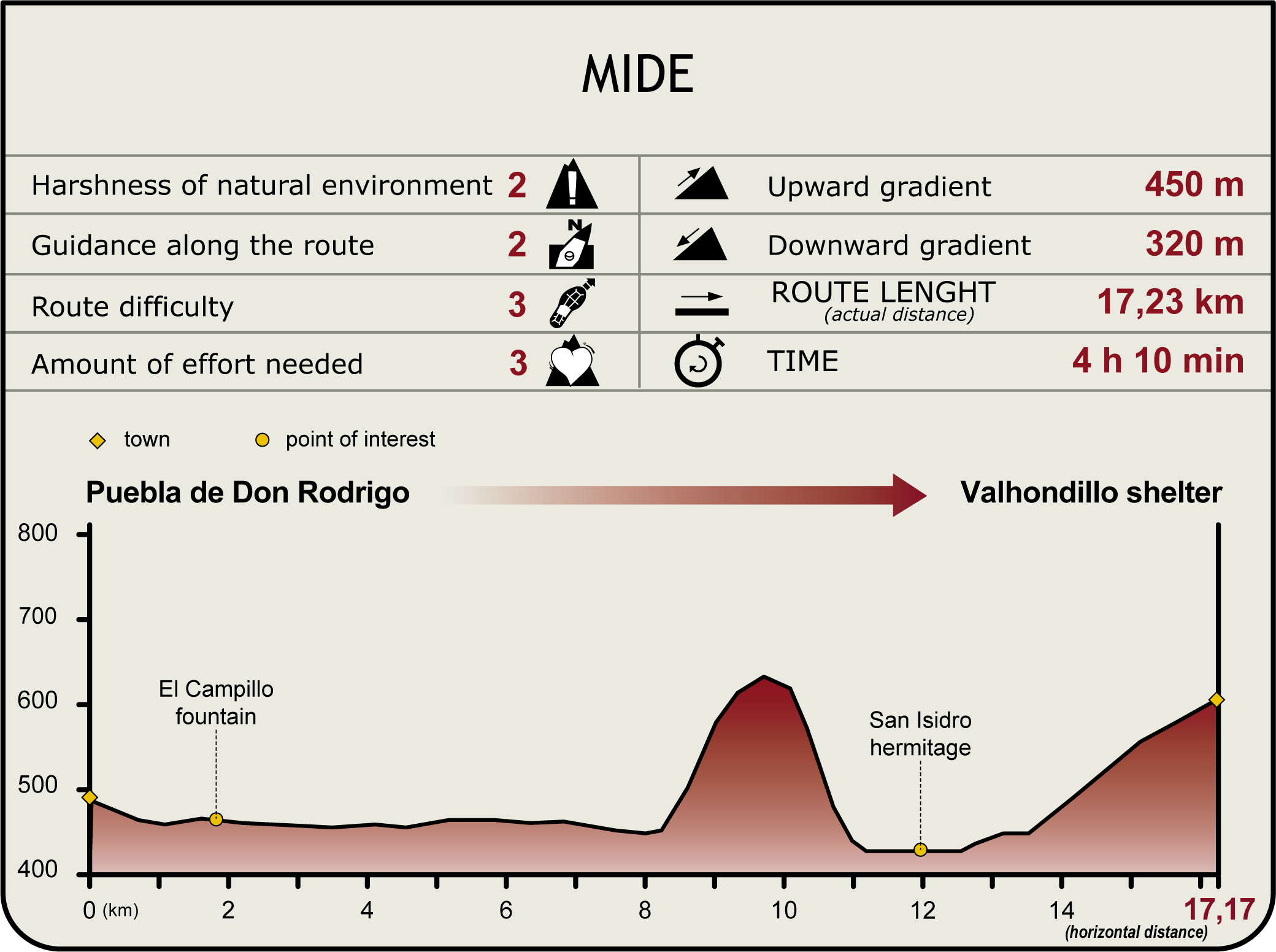
Highlights
Further information
White water lily
An aquatic plant with floating leaves and flowers that roots in the bottom of canals, lagoons and rivers, at depths that can exceed two metres. This plant thrives in fresh, clean, slow-moving or still water. The flowers are white, 10 to 20 cm, fragrant, floating, with long pedicels, numerous petals and white sepals at the top.
This plant, which is highly sensitive to lack of water and pollution, is increasingly scarce throughout the River Guadiana. It has become a bioindicator species of clean water, as it can only grow in the less polluted areas.



